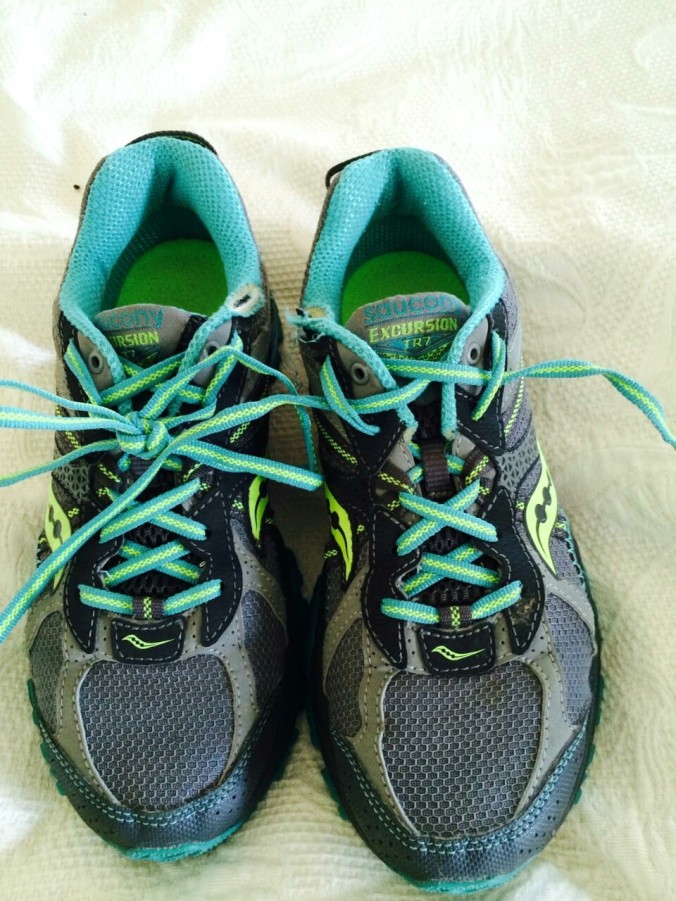Based on some of the responses I got from my Rut post last week, it seems I’m not the only runner-in-training who’s in a bit of a funk right now.
Which got me thinking about the downsides of training for a fall marathon.
Sure, spring marathons have their own winter training challenges: ice, snow, polar vortexes, to name a few.
But training in the summer brings its own special sort of hell.
1. Heat. I know there are people who dream of running Badwater. I’m not one of them. I can barely stand to sit by a pool in the heat, let alone do something to raise my VO2 max threshold.
2. Humidity. Even worse than the heat. Truly. Lately, I may as well have been running on a treadmill in a steam room. While smoking.
3. Schedule. It’s been many moons since I last sat in a classroom, but there is still a part of me that sees “Summer” and wants to take a vacation from everything “Schedule.” Even if your training schedule is as half-assed as mine, it is still a schedule. Screw schedules. I want to be a Grasshopper in the summer, not an Ant.
4. Exhaustion. Summer training kills my sleep. If I want to get a solid run in on a weekday, I’m out the door as the raccoons are heading off to bed. I like to get up early, but there is a difference between getting up early and having coffee in bed vs. getting up early and doing intervals. No rest for the weary during summer marathon training.
5. Social Life. Because I have to be careful of what I eat and drink so I don’t puke on my hot, humid run at dawn, marathon training sure does put a damper in those Summer Nights. No midnight margaritas on the deck the night before a tempo run. If you have my stomach, there is also no: beer, wine, Mexican food, pizza, dairy, salad, anything spicy, or anything that ever touched a vegetable or fruit. I can stomach pancakes or scrambled eggs the night before a long or intense run. With water. Not exactly standard fare at summer soirees.
6. Chafing. When it is cool, I have an idea of where you will chafe, and can glide up properly before you head out. All bets are off when it is hot and humid. I can glide the hell out of every area that touches a waistband, bra strap, pocket – you name it – only to find (when I hop in the shower – Youch!) that there was a random seam on my singlet that got soaked with sweat and chafed my shoulder blade. I developed a chafing rash on my sockline a few weeks ago. WTF? Short of gliding my entire damn body and slip-sliding all 19 miles, summer long runs are hard lessons in the odd places one can chafe.
7. Sandals. I’m not vain, but I also don’t like scaring people. Which is why I hate baring my marathon training feet to the world. Honest truth: every time I go to my local nail salon, they send a guy over. Apparently, my feet are a man’s job. (???) Nothing worse than putting on a cute pair of sandals and realizing that beneath the dainty straps, all you can see are callouses, healing blisters and missing toenails. At least in winter, no one knows what lurks beneath my Uggs.
8. Dehydration. I am either dehydrated, or recovering from being dehydrated, or worried about being dehydrated. All. The. Damn. Time. I am sick of carrying a water bottle everywhere I go. I am tired of Gatorade. I don’t want to add chia seeds to everything. I don’t want to check the color of my pee. I am still a little confused by salt pills. I want a beer. I want more beer.
9. Outdoor time. In the winter, running gives me a good reason to head outdoors. What other excuse do I have for getting some fresh air and Vitamin D when it is 8 degrees? In the summer I have lots of reasons to be outdoors, many of which involve shade, a cool drink and a book. I don’t need the lure of a 3 hour run through the rainforest to motivate me to leave my house.
10. Performance Depression. No matter how hard I run, how much water I drink, how well I fuel, if I look at my pace on my Garmin, I know I will not be impressed. I know, I know – training is more about effort than pace. Even Hanson says so. BUT, there’s something a little thankless about running your heart out only to find that you actually are moving at a snail’s pace.Almost backwards at times. Say what you will about cold temps, but they at least make you zippy.
Two of my bucket list marathons – New York and Chicago – are in the Fall, so I’m probably not done with the fall marathon yet. And the truth is, the fall is a GREAT time to race.
I just wish the summer was a good time to train.
How do you feel about training in the summer? The winter? Ever? Which races are on your bucket list?

